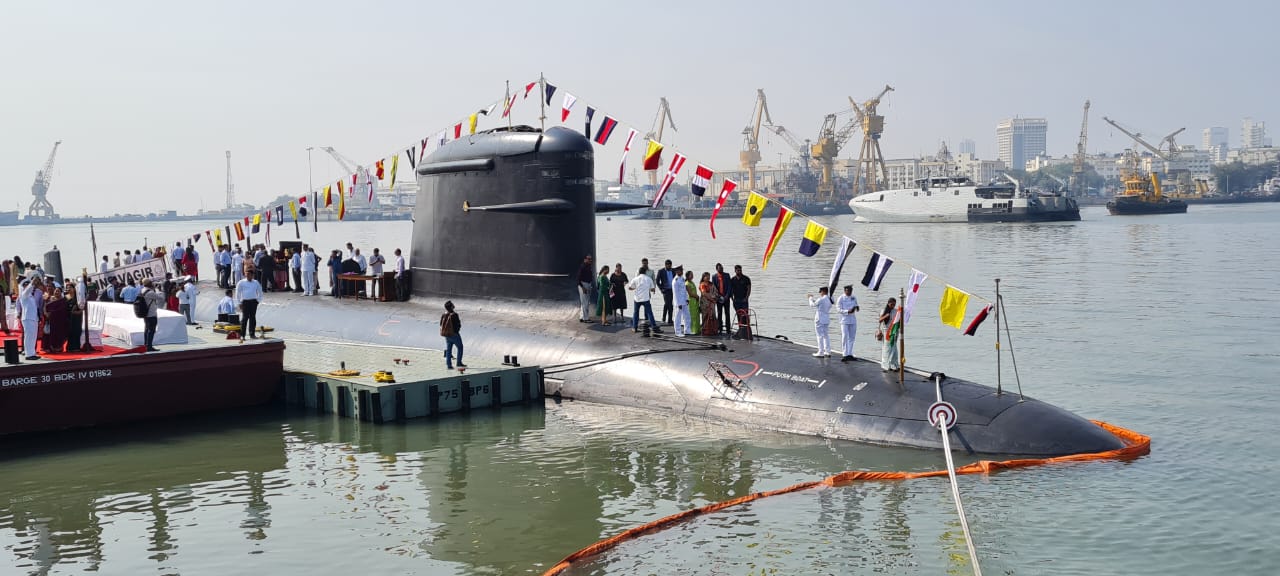The planned installation of the indigenously developed Air Independent Propulsion (AIP) system on the Indian Navy’s Kalvari-class submarines lends a long overdue capability of staying underwater longer.
But only the system’s future performance as it begins getting retrofitted progressively on each boat will tell whether the Defense Research Development Organization’s (DRDO) AIP project has been successful.
Only on Monday, INS Vagir, the fifth vessel in the class, was commissioned into the Indian Navy. The AIP will be installed on the lead boat of the class when it is scheduled for a refit and upgrade.
This would also place the Indian Navy in a better position than Pakistan, with all three of its French Agosta-90B (PNS Khalid, Saad, and Hamza) powered by AIPs.
Pakistan is also expected to receive eight Type 39A Yuan-class AIP-powered submarines beginning in late 2023, as per a $5 billion deal with China.
First Indigenously Developed Air Independent Propulsion in India
On Tuesday, the DRDO’s Naval Materials Research Laboratory (NMRL) signed an agreement with French defense major Naval Group, the original manufacturer of the Scorpene submarines, to cooperate in the detailed design phase for integrating its AIP into the submarines.
This involves the Naval Group helping with the technical tweaks required in the submarine structure to accommodate the AIP, which will be installed as a module towards the submarine’s rear, increasing its length.
AIP-powered conventional diesel-electric submarines (SSK) are considered a midway between nuclear-powered boats and non-AIP SSKs. It allows an SSK to remain submerged for 10 to 14 days without needing to surface to charge its batteries, which might get it detected.
Other SSKs can stay underwater for roughly 48 hours. The fuel-cell-based AIP is unique, as it generates its hydrogen requirement on board.

The prototype has been tested on land and “has reached the stage of maturity for industrialization,” according to a Ministry of Defense (MoD) statement.
The Scorpene submarines are a part of Project-75 (P-75), which involved building six SSKs in India under a transfer-of-technology (ToT) deal. This was followed by the P-75 India, where a leading international shipbuilder would construct six more AIP boats in partnership with an Indian shipyard.
The project, however, has run aground after the exit of the Russian shipbuilder, and other corporate issues like the liability clause and the nature of the ‘strategic partnership’ model.
But most importantly, the primary problem has been the Indian Navy’s technical requirement of the foreign vendor pitching a submarine with a functional, sea-proven AIP.
Only Germany’s ThyssenKrupp Marine Systems and South Korea’s Daewoo Shipbuilding have SSKs designs serving in their navies with installed and functioning AIPs.
Expert Speak
Commander Arvind Mathur, a former submariner, pointed to a toss-up between not upgrading a weapons platform with new technology and reducing operational readiness by committing it to repairs – which takes at least a year.
“You don’t want to downgrade your expensive boat by fitting unproven technology. But till you fit your prototype plant onto an operational boat, you cannot find the problems and shortcomings. So, it is a chicken and egg issue,” Mathur adds.
Mathur also believes it is likely that the Indian Navy will not install the DRDO AIP on other boats until it performs satisfactorily on the first Kalvari.

Commodore Anil Jai Singh (retd), another former submariner, has fundamental queries on the DRDO’s AIP. “Is the system prototype still in the lab? Has the shipborne system’s production begun? Is Naval Group helping develop the AIP or providing the design support for integrating it on the Scorpenes? Finally, when will it be installed on board and trialed successfully at sea?,” Singh asked.
There is no information on the AIP’s performance specifications and whether what will be installed on the Kalvari is a testing prototype or a final series production model.
The submarines will tremendously add to India’s teeth, especially against Pakistan. Commander Ashok Bijalwan, another retired navy man from the submarine arm, maintains that the installation of the AIP wouldn’t be a technical hurdle.
“The boats are constructed section-wise in a modular approach, which is then welded together to put the whole sub together. So, when inserting the AIP module, it will be built as a section and inserted at the designated slot.
Rest everything will be modeled using CAD. The initial stability and trim calculations will also be done theoretically, which will be later validated once floated,” he adds.
- The author can be reached at satamp@gmail.com
- Follow EurAsian Times on Google News




